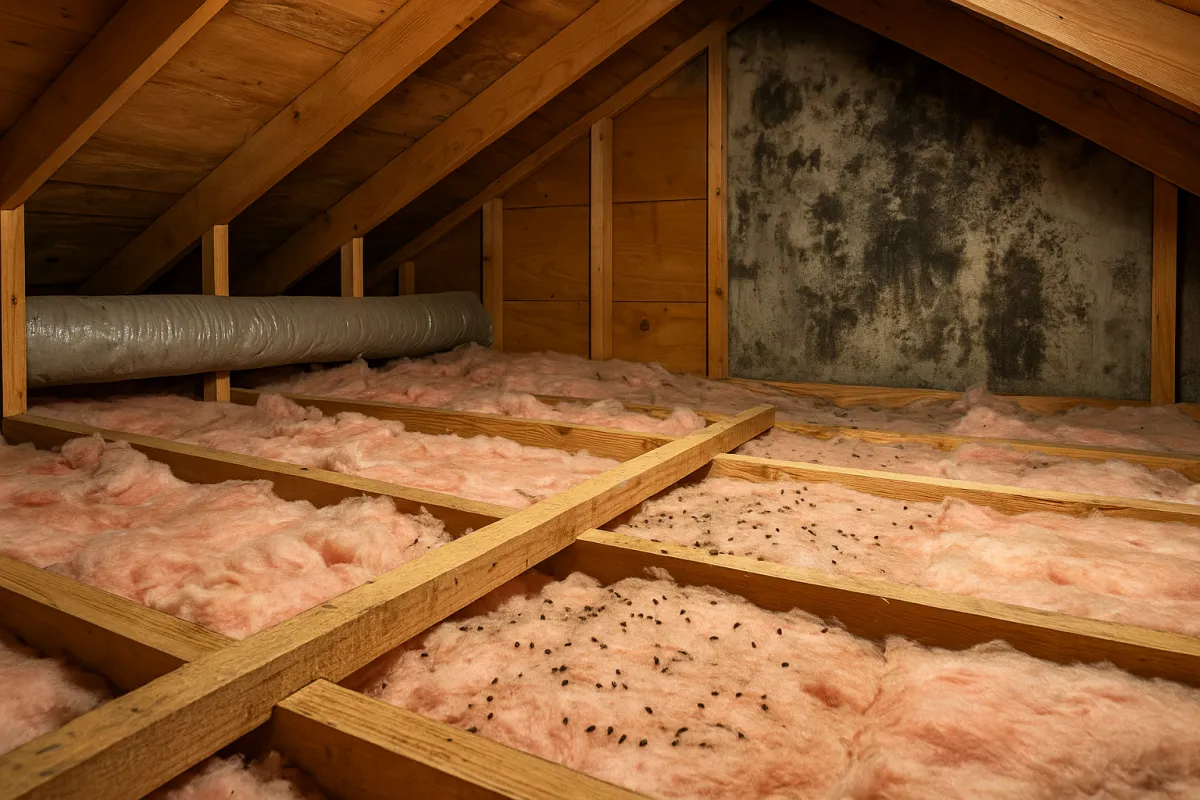
The Hidden Dangers Lurking in Your Attic (And How Professional Cleanouts Fix Them)
The Hidden Dangers Lurking in Your Attic (And How Cleaning Solves Them)
The Space Most Homeowners Forget About
Most homeowners rarely visit their attic—maybe once a year to store holiday decorations or grab an old box. But what you don’t see can hurt you.
Attics are one of the most common areas for hidden contamination, insulation decay, pest activity, and poor ventilation. Because the space is dark, warm, and undisturbed, problems build quietly over time until they start affecting your air quality, home comfort, and even your health.
Professional attic cleanout services don’t just tidy the space—they eliminate hazards and restore your home from the top down. Here’s what may be hiding above your ceiling (and why you shouldn’t ignore it).
1. Rodent Infestations and Contamination
Attics are a perfect home for rats, mice, squirrels, and even raccoons. Once they’re inside, they cause far more damage than most people realize.
Warning Signs of Rodents:
Droppings scattered across insulation
Torn or shredded insulation used for nesting
Gnaw marks on wood or wiring
Foul odors or ammonia-like smells
Scratching noises at night
Rodents leave urine, feces, and pheromones behind—contaminants that don’t stay isolated. The heat from your home’s HVAC system circulates these particles through vents, lowering indoor air quality.
Even more alarming:
Rodent droppings can carry bacteria, parasites, and viruses like hantavirus.
How Cleaning Fixes It:
A professional cleanout removes nests, droppings, contaminated insulation, and biohazard materials. Sanitizing treatments eliminate airborne bacteria and help prevent pests from returning.

2. Mold and Mildew Growth
Attics may seem dry, but many hide high humidity and poor ventilation—perfect conditions for mold.
Common Causes of Attic Mold:
Roof leaks
Poor ventilation trapping warm air
Excess moisture from bathrooms or kitchens venting into the attic
Uninsulated or poorly insulated ductwork
Mold spores in an attic can spread through your home’s HVAC system, causing:
Chronic allergies
Respiratory irritation
Musty odors
Headaches or fatigue
When left untreated, mold grows into wood beams and sheathing, damaging the structure.
How Cleaning Fixes It:
Professionals remove contaminated insulation, treat mold-affected surfaces, and improve airflow. During the cleanout, they identify ventilation issues, which is crucial for long-term mold prevention.
3. Damaged or Ineffective Insulation
Old insulation often hides major problems, especially in homes built 20–40 years ago. Over time, insulation becomes:
Compressed
Moisture-damaged
Contaminated by pests
Covered in dust and debris
When insulation loses its effectiveness, your home loses energy—literally.
Signs Your Attic Insulation Needs Replacement:
Uneven temperatures between rooms
High heating or cooling bills
Draftiness or cold ceilings
Visible gaps in insulation coverage
Insulation full of rodent waste or moisture essentially becomes a health hazard, not just an energy issue.
How Cleaning Fixes It:
A cleanout removes old insulation and prepares the attic for fresh, high-performance materials. New insulation improves:
Energy efficiency
Indoor comfort
Noise reduction
Air quality
This can reduce energy bills significantly, especially in older homes.

4. Fire Hazards Hidden Above Your Ceiling
Many attics contain dangerous wiring conditions that homeowners don’t discover until it’s too late.
Common Fire Risks:
Rodents chewing electrical wires
Exposed or outdated wiring
Overheated junction boxes buried under insulation
Faulty HVAC components
Dust-covered insulation can also ignite if placed too closely to heat-producing equipment.
How Cleaning Fixes It:
A professional cleanout includes inspecting wiring visibility, clearing debris away from heat sources, and identifying repairs needed before they become catastrophic.
5. Air Leaks That Affect the Entire Home
Attics are one of the biggest sources of air loss in a home. Without sealing, conditioned air escapes through the ceiling—forcing your HVAC to work harder.
Signs of Attic Air Leaks:
Drafts coming from ceiling fixtures
High energy bills
Rooms that never stay warm or cool
Dust accumulation from attic air entering the living space
Air leaks also allow contaminated attic air to enter your home, dragging allergens, dust, and pollutants along with it.
How Cleaning Fixes It:
During a cleanout, technicians identify and seal air gaps around:
Light fixtures
Duct openings
Plumbing penetrations
Chimney chases
HVAC lines
Air sealing alone can dramatically improve comfort and reduce utility costs.

6. Poor Attic Ventilation
Attics must breathe—without ventilation, heat and moisture get trapped, creating a cycle of deterioration.
Symptoms of Poor Ventilation:
Excessively hot attic in summer
Condensation during winter
Mold along rafters
Curling or damaged roof shingles
Moisture from poor ventilation can cause roof rot from the inside out.
How Cleaning Fixes It:
Professionals inspect airflow and recommend solutions such as:
Ridge vents
Soffit vent clearing
Baffle installation
Attic fans or mechanical ventilation
Good airflow protects the attic, roof, and insulation below it.
What a Professional Attic Cleanout Includes
A high-quality cleanout is more than debris removal. Services typically include:
✔ Removal of old or contaminated insulation
✔ Full sanitation and odor neutralization
✔ Pest waste cleanup and nest removal
✔ Inspection for mold, leaks, and structural issues
✔ Air sealing to improve energy efficiency
✔ Installation of fresh insulation (optional/add-on)
✔ Ventilation assessment and upgrades
The goal isn’t just to clean—it’s to restore your attic into a safe, healthy, and efficient part of your home.

The Benefits You Feel Immediately
After an attic cleanout, homeowners typically experience:
Cleaner indoor air
Fewer allergens, odors, and airborne contaminants.
Better comfort throughout the home
More consistent temperatures and reduced drafts.
Lower energy bills
Improved insulation and sealed air leaks reduce HVAC workload.
Peace of mind
You know what’s above your ceiling—and that it’s safe.
Final Thoughts
Most attic problems stay hidden until they cause visible damage. Rodent contamination, mold, bad insulation, poor ventilation, and fire hazards are usually discovered after they’ve affected your air quality and comfort.
A professional attic cleanout not only removes those risks but resets your home’s health from the top down.
If you want cleaner air, lower bills, and a safer home, your attic is the first place to start—because what’s above your ceiling impacts everything below it.